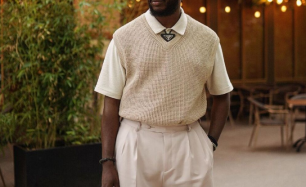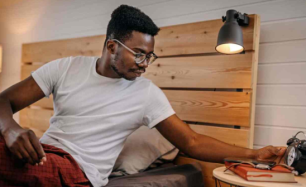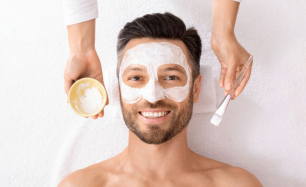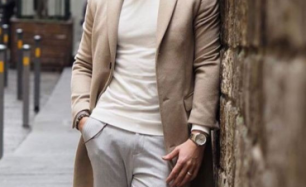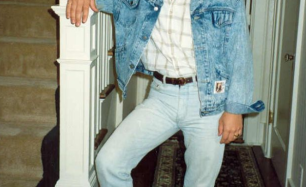The Role of Color Theory in Men’s Fashion
Color is one of the most powerful elements in fashion. It influences mood, perception, and style—and in men’s fashion, it’s often the key difference between looking good and looking great. While many men stick to safe neutrals, understanding color theory opens up a world of outfit possibilities that feel bold, intentional, and effortlessly put-together.
Whether you’re dressing for work, a night out, or just want to elevate your casual wardrobe, color theory gives you the tools to do so with confidence. Here’s how it works—and why it matters.

What Is Color Theory?
Color theory is the science and art of using colors in harmony. It’s based on the color wheel, a visual representation of how colors relate to one another. This wheel helps identify which hues complement, contrast, or clash—so you can mix and match your clothing without second-guessing your choices.
The three main types of color relationships are:
- Complementary Colors – Opposites on the color wheel (e.g., blue and orange)
- Analogous Colors – Neighbors on the color wheel (e.g., blue, blue-green, and green)
- Triadic Colors – Evenly spaced on the wheel, forming a triangle (e.g., red, yellow, and blue)
Understanding these relationships can help you create color combinations that are balanced, visually appealing, and expressive of your personal style.
Why Color Theory Matters in Men’s Fashion
1. Creates Visual Harmony
Outfits that follow color theory principles tend to feel more “put-together” without trying too hard. Even if you’re wearing basic pieces, good color coordination makes your outfit look intentional and balanced.
2. Expresses Personality and Mood
Color impacts how others perceive you—and how you feel about yourself. Navy and charcoal project professionalism, earth tones feel grounded and relaxed, while bold reds and yellows command attention. Understanding what different colors communicate helps you dress with purpose.
3. Expands Your Wardrobe
By learning how to pair colors effectively, you’ll get more wear out of the pieces you already own. That blue shirt doesn’t just go with jeans—it can pair with khaki, olive, rust, or cream when you apply color theory.
Using Color Theory in Practice
Complementary Pairings (High Contrast, Bold Impact)
Great for making a statement. These combinations use two opposite colors on the wheel for high visual interest.
- Blue and orange
- Green and red
- Purple and yellow
How to style: Use one color as the base (e.g., a navy suit) and the other as an accent (e.g., a burnt orange tie or pocket square).
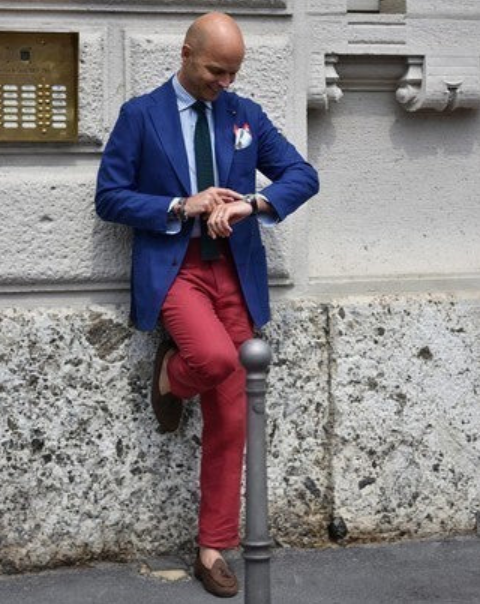
Analogous Pairings (Subtle and Stylish)
These use three neighboring colors for a more cohesive, natural look.
- Blue, teal, and green
- Burgundy, red, and orange
- Brown, tan, and olive
How to style: Choose one as your main color, another as a secondary layer, and the third for accessories. These combos are great for smart-casual outfits and layering.
Triadic Pairings (Balanced and Playful)
This method uses three evenly spaced colors for a bold but balanced outfit.
- Navy, mustard yellow, and burgundy
- Green, orange, and purple (in deeper tones)
How to style: Stick to darker or muted versions of these hues to keep the outfit wearable. Let one color lead while the others support.
Mastering Neutrals: The Foundation of Men’s Style
Neutrals are a crucial part of color theory because they go with everything. Knowing how to use them strategically lets your colors shine without overwhelming the outfit.
- Warm neutrals: Beige, camel, ivory, olive
- Cool neutrals: White, grey, navy, black
Pro tip: Pair a bright or bold color with grounding neutrals to strike balance—for example, a rust bomber jacket with a white tee and charcoal chinos.

Skin Tone and Color Choice
Color theory is also helpful when choosing hues that complement your skin tone:
- Cool undertones (pink, blueish skin): Look great in blues, greys, and jewel tones like emerald and sapphire.
- Warm undertones (golden or olive skin): Shine in earth tones, warm greens, rusts, and terracotta.
- Neutral undertones: Most colors will suit you—focus on contrast and balance.
If you’re unsure, test clothes in natural light and see which shades make your skin look more even and vibrant.
Practical Color Combinations for Everyday Looks
- Navy + White + Camel – Clean, classic, and seasonless
- Olive + Charcoal + Black – Urban, grounded, and masculine
- Light Blue + Tan + Burgundy – Balanced and approachable
- Denim + Gray + Mustard – Trend-forward yet understated
- Cream + Forest Green + Rust – Earthy, stylish, and modern
Final Thoughts
Color theory isn’t about memorizing rules—it’s about understanding relationships between colors and using them to build a wardrobe that works for you. Once you know how different hues play together, you can experiment more confidently and dress with creativity and precision.
Whether you’re dressing for impact, balance, or ease, color theory gives you the tools to do it all—with style.

